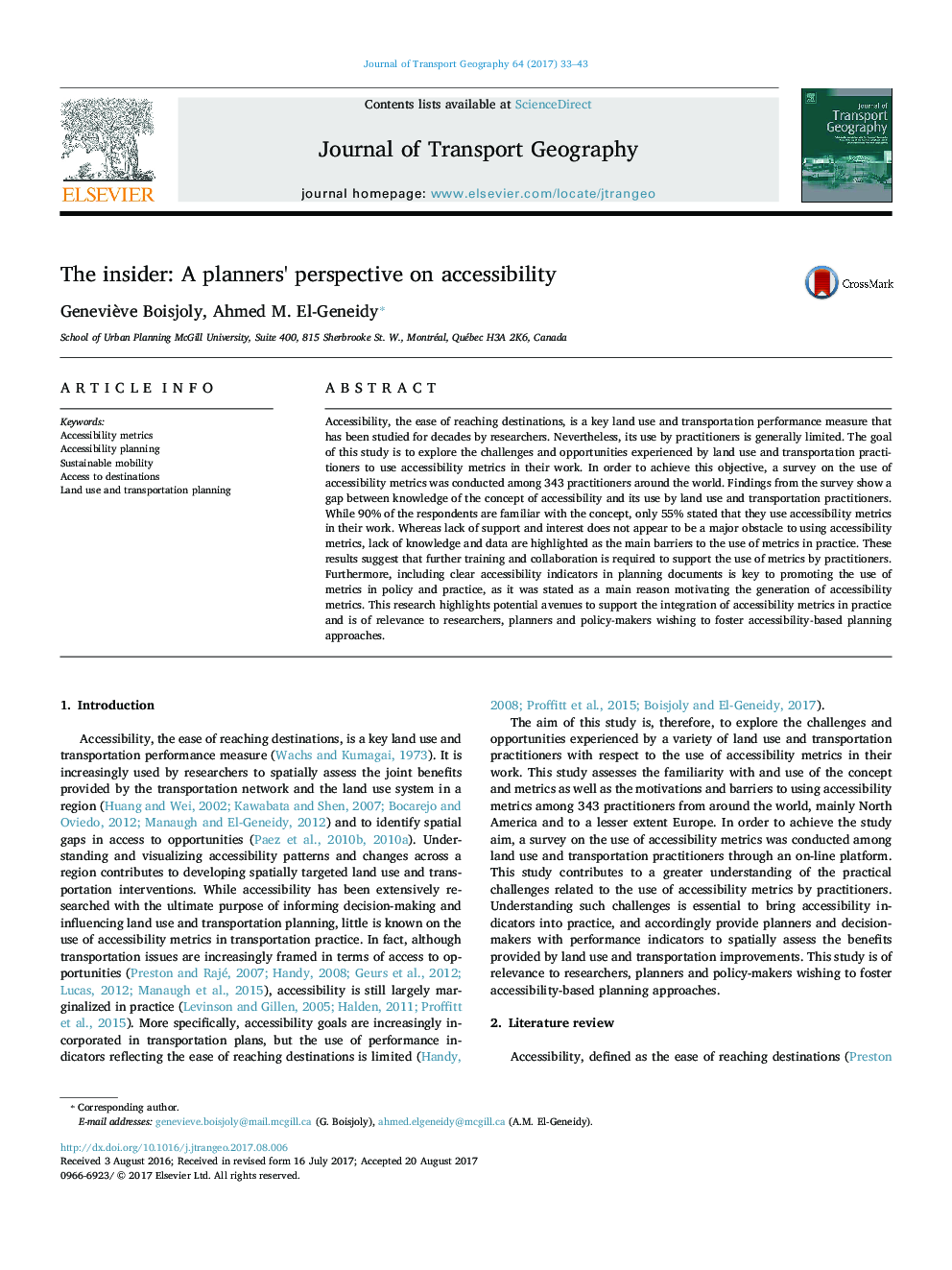| Article ID | Journal | Published Year | Pages | File Type |
|---|---|---|---|---|
| 5117455 | Journal of Transport Geography | 2017 | 11 Pages |
Abstract
Accessibility, the ease of reaching destinations, is a key land use and transportation performance measure that has been studied for decades by researchers. Nevertheless, its use by practitioners is generally limited. The goal of this study is to explore the challenges and opportunities experienced by land use and transportation practitioners to use accessibility metrics in their work. In order to achieve this objective, a survey on the use of accessibility metrics was conducted among 343 practitioners around the world. Findings from the survey show a gap between knowledge of the concept of accessibility and its use by land use and transportation practitioners. While 90% of the respondents are familiar with the concept, only 55% stated that they use accessibility metrics in their work. Whereas lack of support and interest does not appear to be a major obstacle to using accessibility metrics, lack of knowledge and data are highlighted as the main barriers to the use of metrics in practice. These results suggest that further training and collaboration is required to support the use of metrics by practitioners. Furthermore, including clear accessibility indicators in planning documents is key to promoting the use of metrics in policy and practice, as it was stated as a main reason motivating the generation of accessibility metrics. This research highlights potential avenues to support the integration of accessibility metrics in practice and is of relevance to researchers, planners and policy-makers wishing to foster accessibility-based planning approaches.
Related Topics
Life Sciences
Environmental Science
Environmental Science (General)
Authors
Geneviève Boisjoly, Ahmed M. El-Geneidy,
